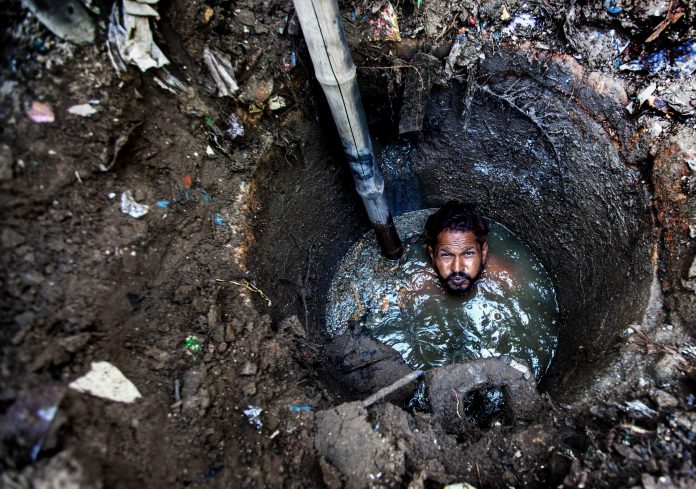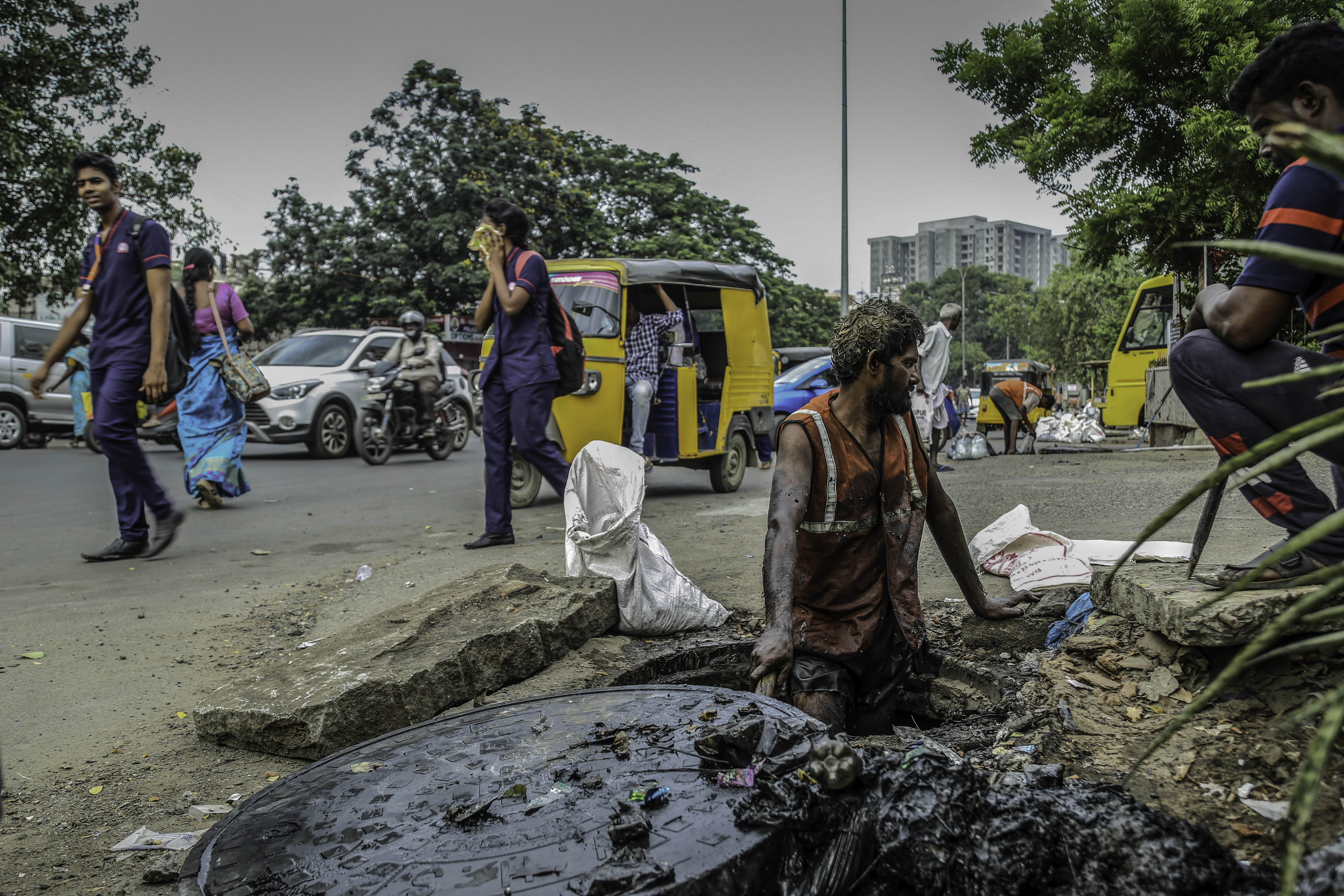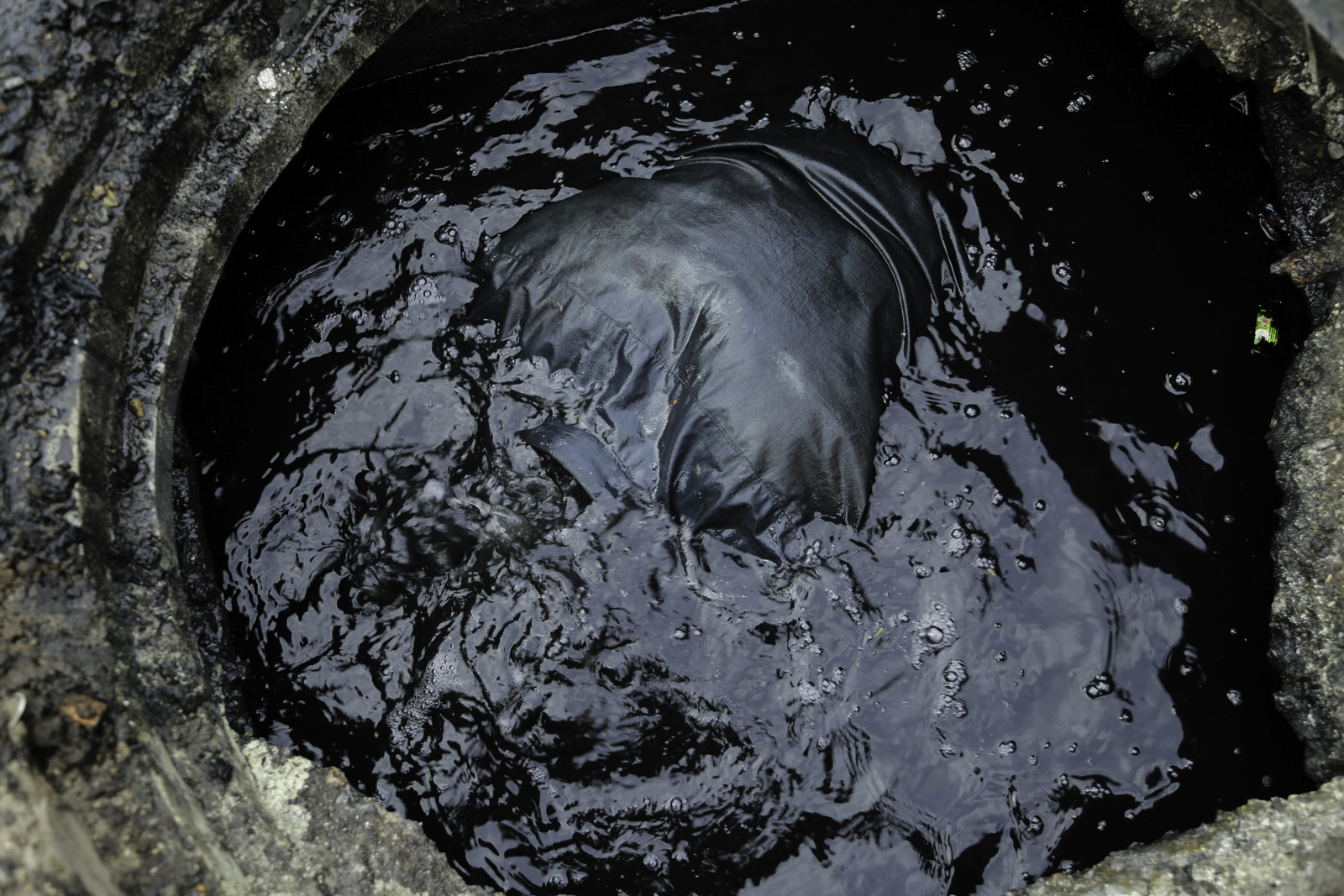
In an interview with TwoCircles.net, two celebrated photo journalists Vijay Pandey and Palanikumar.M talk about their experience of cataloguing the lives (and deaths) of manual scavengers in India.
Megha Sharma | TwoCircles.net
NEW DELHI — Manual scavenging is still being practiced in India despite being officially outlawed in 2013. Mired in the politics of caste and social inequality, manual scavenging has and continues to claim lives of workers (most of whom belong to the Dalit and other minority communities) who subject themselves to taking on the task of handling untreated human faecal matter in return for very meager pay and sans any protective gear or equipment. In doing so, they become prone to the dangers of asphyxiation and a horde of other fatal diseases like cholera, meningitis and hepatitis amidst others.
TwoCircles.net caught up with two celebrated photo journalists Vijay Pandey and Palanikumar.M who have catalogued the lives (and deaths) of manual scavengers in India.
In a career spanning over two decades now, Vijay Pandey has worked for trailblazing English news publications like Tehelka and Outlook. His work has also been featured in international media outlets like The Guardian, Vice and Al-Jazeera. Vijay is currently working on human rights and religious freedom stories from within India.

Palanikumar.M, who comes from an Engineering background, discovered his love for the art of photography and subsequently worked as a cinematographer for the critically acclaimed 2017 documentary Kakkoos. A 2019 PARI (People’s Archive of Rural India) Fellow, Palani currently serves as the Staff Photographer for this highly acclaimed project and is also associated with Pep Collective – a forum of socially responsible photographers in Tamil Nadu.
Excerpts from the interview:
What propelled you towards documenting the life of manual scavengers and their families in India? Why did you choose to focus on this topic?
Vijay: The first time this issue came to my notice was in the year 2008. I initially regarded it as just another routine story amongst the many others I was working on. But I soon realized the gravity of this issue, and how the people of this community were constantly bitter at the reality of being dehumanized to that extent.
Palanikumar: While working on Kakkoos in the years 2015-16, visiting public toilets became part of my daily routine. In meeting so many people who worked in these establishments, I realised exactly how terrible the big picture was when it came to the practice of manual scavenging. It shocked me to the core, and has stayed with me even after all these years.
Though officially banned, what is the situation on the ground today when it comes to this practice?
Vijay: Despite the ban, it is very easy till date to find sanitation workers cleaning manholes and drains in the localities in Delhi-NCR and other parts of the country. I have documented contractual sanitary workers with the Ghaziabad Municipal Corporation entering the manhole without any safety gear right in front of the District Magistrate’s bungalow in Ghaziabad in 2018. Even during the pandemic, in Delhi and other states, they were doing their routine work of entering manholes, cleaning sewers and carrying human excreta without any protection whatsoever.

Palanikumar: Yes, it’s illegal. But this means very little when there is no action to follow the ruling. The problem here if of caste-based discrimination. These people are invisible to the ‘upper’ classes and the powers in governance. The fact that this practice is outlawed essentially makes the deaths that have consequently occurred owing to it, criminal in nature. But who is taking up these cases? Who is filing FIRs on behalf of those who lost their lives? No one.
What have you taken away from the experience of documenting the lives of these people?
Vijay: It’s been many years since I first encountered manual scavengers yet I am still horrified as to how a human being is forced to clean the faeces of another, with bare hands – just for a handful of rupees a month. The level of dehumanization that has taken place in this instance is truly shocking and has stayed with me over time. Every time I look upon the pictures, I feel myself reliving the trauma being faced by the subjects in them. It’s a case of clear systemic failure.
Palanikumar: When I met the families of the workers, I realised that most of their children were not even aware of the fact that their parents were manual scavengers. This made me recognize and understand the unending cycle of shame and guilt these people and their families were stuck in. Though my pictures and the documentary received acclaim and widespread coverage, the practice is still prevalent and that is the reason why I do not want to give it up and have continued with my coverage of this issue in my home state of Tamil Nadu.

Any particular moment from your documentation that has stuck with you over the years?
Vijay: I had followed a manual scavenger, Vicky, who was a contractual sanitary worker with Ghaziabad Municipal Corporation. I saw him entering a blocked manhole full of sewage water in order to clear the obstruction. Owing to the lack of any gear, he was forced to hold his breath before submerging himself. Vicky told me that sometimes, when he lost his breath while inside, the sewage water entered his mouth. This was his daily routine. Vicky had many skin problems, and I find myself remembering his face still.
Palanikumar: While working in Villupuram area of Tamil Nadu, I witnessed the death of a worker who had been father to four daughters. The moment one of his little girls saw their father’s dead body in an ice box was one I cannot seem to forget. I have hardened myself over the years in order to do my work efficiently, but at that moment in time my hands were shaking.
I am also reminded of Arun Kumar, a worker who died due to exposure to noxious gases while at work in Express Avenue Mall in Chennai. The irony of the fact that he died in a manhole at a place where one doesn’t even need to lift a hand to open the door which is automated, struck me very forcibly. What use is technology if we do not use it to alleviate this level of suffering?
Megha Sharma is a freelance writer based in Bangalore, who has been in the industry for over a decade now. An avid poet, she can be found on her insta @whrartthoudarcy

